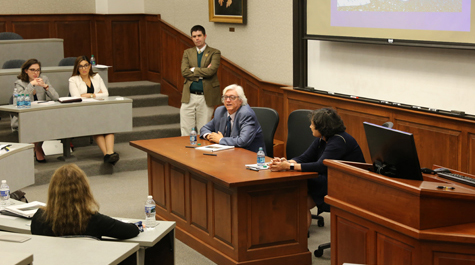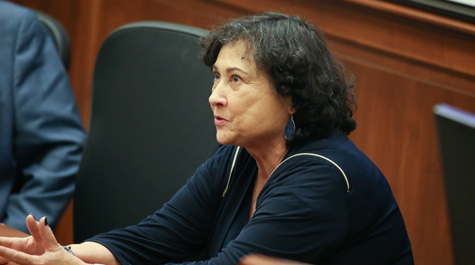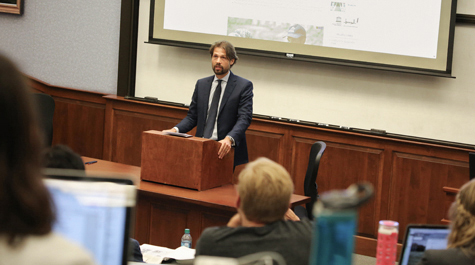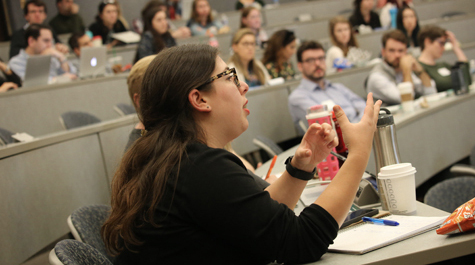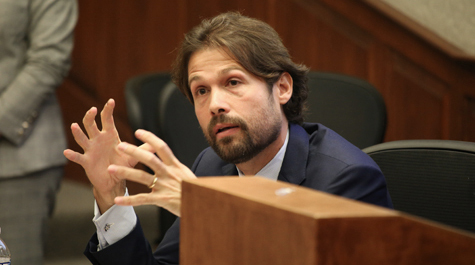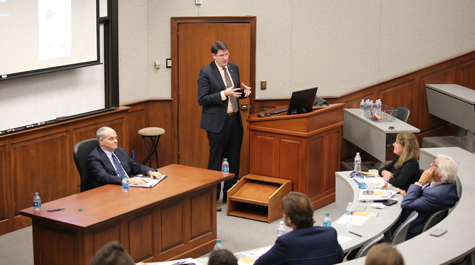Cultural Heritage Law examined during 2018 Cultural Heritage Symposium
On Friday, Oct. 19, the Art and Cultural Heritage Law Society and the Center for Comparative Legal Studies and Post-Conflict Peacebuilding (CLS/PCP) hosted the 2018 Cultural Heritage Symposium. The afternoon event featured two expert panels on cultural heritage law and a keynote presentation by Ricardo de Guimarães Pinto, Liaison Officer to the United Nations at the UNESCO Liaison Office in New York.
The first panel, moderated by Professor Thomas J. McSweeney of William & Mary Law School, considered the question: “What types of sites and places are protected by cultural heritage law?” Linda Malone, the Marshall-Wythe Foundation Professor of Law and Founding Director of the Human Security Law Center at William & Mary, spoke about the use of the international crime of pillage to convict state and private actors who profit from illegal wildlife trade in conflict areas.
Next, Ole Varmer, Attorney-Advisor for the National Oceanic and Atmospheric Administration (NOAA) Office of the General Counsel, spoke about the scope and history of cultural history protection, including his own work adjudicating legal protection for shipwrecks in coastal waters.
The second panel, moderated by Professor Christie Warren, Professor of the Practice of International and Comparative Law, and Director of CLS/PCP, asked: “How do we protect cultural heritage in post-conflict situations?” Thomas R. Kline, a partner at Cultural Heritage Partners, examined the methods he and his colleagues have used to establish ownership of artistic pieces stolen during armed conflict, including pieces of mosaics from Cyprus and paintings stolen from European Jews during the Second World War. Dr. Brian Daniels, director of research and programs for the Penn Cultural Heritage Center at the University of Pennsylvania Museum, discussed his work training, equipping and assisting cultural heritage professionals protecting threatened artifacts in war-torn Syria.
Between the two panels, Ricardo de Guimarães Pinto delivered the keynote address.
“Heritage reminds us that, despite our many differences, we are all linked together by the web of history; we all belong to the same human family,” de Guimarães Pinto said. He spoke about the legal aspects of the work UNESCO has done to protect culturally significant sites around the world and the value those sites bring to society.
Throughout the symposium, de Guimarães Pinto and panelists answered questions from the audience about their own work and about broader issues in the field of cultural preservation.
The Cultural Heritage Symposium was organized by the Art and Cultural Heritage Law Society, a William & Mary Law student organization dedicated to studying the legal aspects of artistic and cultural preservation.
About William & Mary Law School
Thomas Jefferson founded William & Mary Law School in 1779 to train leaders for the new nation. Now in its third century, America's oldest law school continues its historic mission of educating citizen lawyers who are prepared both to lead and to serve.
